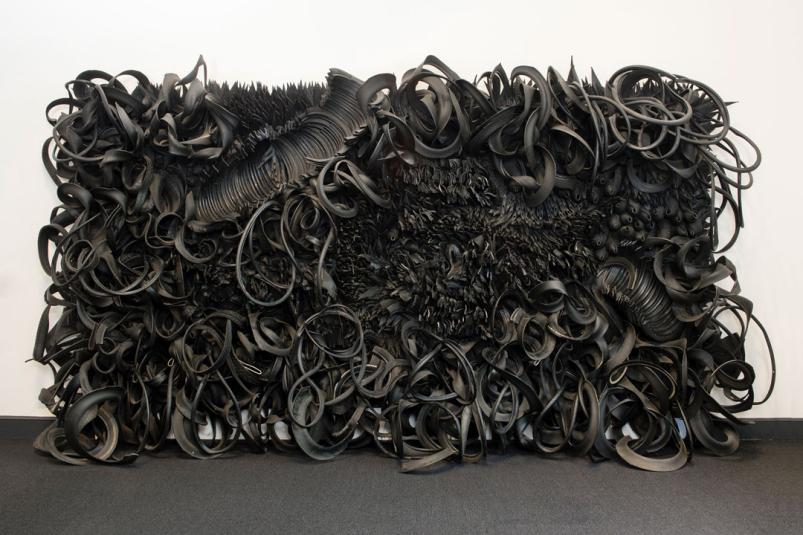-
–

Chakaia Booker, Acid Rain, 2001, rubber tires and wood, National Museum of Women in the Arts, Washington, D.C. Museum purchase: Members' Acquisition Fund
How do artists help us reflect on the interconnectedness of the world? Learn how awe fuels environmental action while exploring Chakaia Booker’s rubber sculptures.
During this 90-minute pause from your daily route, we’ll look slowly and mindfully at the works of art in the exhibition In the Tower: Chakaia Booker: Treading New Ground. You’ll be invited to look closely, wonder, and share your insights with the group. Together, we’ll learn “awe practices” that you can bring to your everyday life.
The workshop exploring Chakaia Booker’s work will be offered on October 24 at 2:15 p.m. and on October 25 at 10:30 a.m. and 2:15 p.m. We encourage you to register for one workshop on this topic and to join us for future topics as well.
Ages 18 and up. Questions? Email us at [email protected].
“Finding Awe” is grounded in the National Gallery’s mission to welcome all people to explore and experience art, creativity, and our shared humanity. It offers new “awe practices” drawn from the research of Dacher Keltner, professor of psychology at the University of California-Berkeley, director of The Greater Good Science Center, and author of Awe: The New Science of Everyday Wonder and How It Can Transform Your Life (2023). Research shows that experiences of awe help support mental and physical wellbeing and open us up to greater creativity and deeper empathy.
Image credit: Chakaia Booker, Acid Rain, 2001, rubber tires and wood, National Museum of Women in the Arts, Washington, D.C. Museum purchase: Members' Acquisition Fund
You may also like






